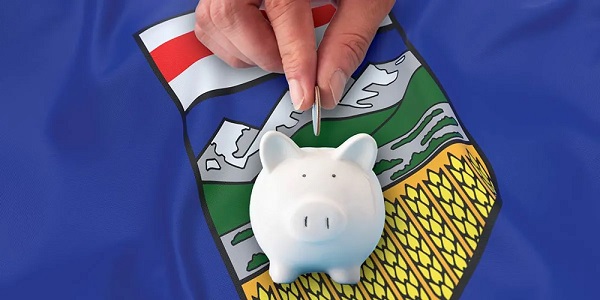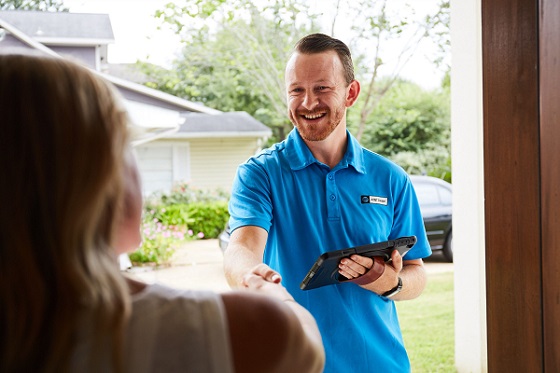Alberta
Province shares plan for school relaunch

From the Province of Alberta
Students returning to school for 2020-21 school yearStudents will return to learning in classrooms across Alberta at the beginning of the new school year. Schools will be ready to welcome students under scenario 1, which is near-normal daily operations with health measures. Alberta’s government has developed a re-entry tool kit to prepare parents and students for what to expect in the new school year. The tool kit includes videos for students explaining some of the health measures, a guide for parents, frequently asked questions, school posters, a self-screening questionnaire in multiple languages, and links to health guidelines.
Under scenario 1, schools will implement a number of public health measures, which include frequent cleaning of surfaces, placing hand sanitizers at school entrances and classrooms, grouping students in cohorts, and planning the school day to allow for physical distancing, which could include staggering start times for classes, recesses and lunches. Additional public health measures may be established prior to September on the advice of the chief medical officer of health in consultation with the education system. In addition, students, staff, parents and school visitors will be expected to use a self-screening questionnaire daily to determine whether they can enter the school.
Successful transition to summer school and child careAlberta’s school re-entry plan works, and already has mitigated risks to students and teachers. Throughout the summer, the Calgary Catholic Separate School Division ran in-person summer school programming in accordance to the guidelines developed and issued by the province. These comprehensive guidelines have mitigated risk, resulting in no COVID-19 outbreaks among teachers or students participating in summer school. Additionally, Alberta has seen a successful reopening of child care centres across the province. Children and staff have safely returned to these centres with no outbreaks occurring. School authority fundingSchool authorities have returned to full funding levels as of July 1, and every school authority in Alberta is receiving a funding increase for the 2020-21 school year – roughly $120 million across the province. A list of funding for every school authority is available here. In addition, the Minister of Education has approved the use of school board reserves, if needed, to help cover local COVID-19-related costs. The total amount of money sitting in school board reserves is $363 million. Accelerated capital school fundingThe province has also provided school boards an additional $250 million to support accelerated capital maintenance and renewal projects, as part of the more than $10 billion infrastructure spending announced in the Alberta Recovery Plan. This funding supports infrastructure enhancements that will help in a COVID-19 learning environment. Seventy-nine school projects totalling $15 million are moving forward with this primary purpose, including upgrades for enhanced hygiene such as hands-free sinks, automatic flush toilets, touchless soap and paper towel dispensers, automatic doors and water bottle filling stations to replace water fountains. New online Student Learning HubA new Student Learning Hub on new.learnalberta.ca is available for parents, students, and teachers to more easily access educational materials to support development of student literacy and numeracy, and provide health and wellness information. The online hub is another resource to support Alberta’s school re-entry plan, with recognition that more online learning resources may be needed during the upcoming school year. Additional resources will also be added throughout the school year. Expanding diploma examsDiploma exams will be offered in every subject in the November and April exam sessions. Expanding the offerings of the diploma exams will support school authorities who are shifting high school programming to a four-semester system as part of their COVID-19 re-entry plan. This shift allows for better cohorting by limiting the number of classes a student is in during a term without affecting total learning time over the course of a year. Personal protective equipmentStudents and staff may wear a mask if they choose to. However, practices such as physical distancing, cohorting, frequent handwashing, staying home when sick and increased cleaning of surfaces will continue to be the priority public health measures. COVID-19 cases at schoolIf a student or staff tests positive for COVID-19, a public health team will investigate to determine when symptoms developed and support the school to minimize transmission. While each case will be addressed based on its unique circumstances, it is anticipated that in most cases only the group of students and staff who came in close contact will likely be required to stay home for 14 days, and not the entire school population. Parents will be notified if a case of COVID-19 is confirmed at school and public health officials will contact those who were in close contact with that person. Transitioning to scenario 2 or scenario 3If there is an outbreak of COVID-19 in a community or school, health officials will work with Alberta Education and impacted school authorities to make any decision to potentially transition to partial in-class learning or at-home learning. Decisions will be based on multiple factors including the number of cases in a community or school and the risk of ongoing transmission. The health guidance for scenario 2 has been updated to allow for a maximum of 20 students per class. |
Alberta
Median workers in Alberta could receive 72% more under Alberta Pension Plan compared to Canada Pension Plan

From the Fraser Institute
By Tegan Hill and Joel Emes
Moving from the CPP to a provincial pension plan would generate savings for Albertans in the form of lower contribution rates (which could be used to increase private retirement savings while receiving the same pension benefits as the CPP under the new provincial pension), finds a new study published today by the Fraser Institute, an independent, non-partisan Canadian public policy think-tank.
“Due to Alberta’s comparatively high rates of employment, higher average incomes, and younger population, Albertans would pay a lower contribution rate through a separate provincial pension plan while receiving the same benefits as under the CPP,” said Tegan Hill, director of Alberta policy at the Fraser Institute and co-author of Illustrating the Potential of an Alberta Pension Plan.
Assuming Albertans invested the savings from moving to a provincial pension plan into a private retirement account, and assuming a contribution rate of 5.85 per cent, workers earning the median income in Alberta ($53,061 in 2025) could accrue a stream of retirement payments totalling $454,741 (pre-tax)—a 71.6 per cent increase from their stream of CPP payments ($264,968).
Put differently, under the CPP, a median worker receives a total of $264,968 in retirement income over their life. If an Alberta worker saved the difference between what they pay now into the CPP and what they would pay into a new provincial plan, the income they would receive in retirement increases. If the contribution rate for the new provincial plan was 5.85 per cent—the lower of the available estimates—the increase in retirement income would total $189,773 (or an increase of 71.6 per cent).
If the contribution rate for a new Alberta pension plan was 8.21 per cent—the higher of the available estimates—a median Alberta worker would still receive an additional $64,672 in retirement income over their life, a marked increase of 24.4 per cent compared to the CPP alone.
Put differently, assuming a contribution rate of 8.21 per cent, Albertan workers earning the median income could accrue a stream of retirement payments totaling $329,640 (pre-tax) under a provincial pension plan—a 24.4 per cent increase from their stream of CPP payments.
“While the full costs and benefits of a provincial pension plan must be considered, its clear that Albertans could benefit from higher retirement payments under a provincial pension plan, compared to the CPP,” Hill said.

Illustrating the Potential of an Alberta Pension Plan
- Due to Alberta’s comparatively high rates of employment, higher average incomes, and younger population, Albertans would pay a lower contribution rate with a separate provincial pension plan, compared with the CPP, while receiving the same benefits as under the CPP.
- Put differently, moving from the CPP to a provincial pension plan would generate savings for Albertans, which could be used to increase private retirement income. This essay assesses the potential savings for Albertans of moving to a provincial pension plan. It also estimates an Albertan’s potential increase in total retirement income, if those savings were invested in a private account.
- Depending on the contribution rate used for an Alberta pension plan (APP), ranging from 5.85 to 8.2 percent, an individual earning the CPP’s yearly maximum pensionable earnings ($71,300 in 2025), would accrue a stream of retirement payments under the total APP (APP plus private retirement savings), yielding a total retirement income of between $429,524 and $584,235. This would be 22.9 to 67.1 percent higher, respectively, than their stream of CPP payments ($349,545).
- An individual earning the median income in Alberta ($53,061 in 2025), would accrue a stream of retirement payments under the total APP (APP plus private retirement savings), yielding a total retirement income of between $329,640 and $454,741, which is between 24.4 percent to 71.6 percent higher, respectively, than their stream of CPP payments ($264,968).

Joel Emes
Alberta
Alberta ban on men in women’s sports doesn’t apply to athletes from other provinces

From LifeSiteNews
Alberta’s Fairness and Safety in Sport Act bans transgender males from women’s sports within the province but cannot regulate out-of-province transgender athletes.
Alberta’s ban on gender-confused males competing in women’s sports will not apply to out-of-province athletes.
In an interview posted July 12 by the Canadian Press, Alberta Tourism and Sport Minister Andrew Boitchenko revealed that Alberta does not have the jurisdiction to regulate out-of-province, gender-confused males from competing against female athletes.
“We don’t have authority to regulate athletes from different jurisdictions,” he said in an interview.
Ministry spokeswoman Vanessa Gomez further explained that while Alberta passed legislation to protect women within their province, outside sporting organizations are bound by federal or international guidelines.
As a result, Albertan female athletes will be spared from competing against men during provincial competition but must face male competitors during inter-provincial events.
In December, Alberta passed the Fairness and Safety in Sport Act to prevent biological men who claim to be women from competing in women’s sports. The legislation will take effect on September 1 and will apply to all school boards, universities, as well as provincial sports organizations.
The move comes after studies have repeatedly revealed what almost everyone already knew was true, namely, that males have a considerable advantage over women in athletics.
Indeed, a recent study published in Sports Medicine found that a year of “transgender” hormone drugs results in “very modest changes” in the inherent strength advantages of men.
Additionally, male athletes competing in women’s sports are known to be violent, especially toward female athletes who oppose their dominance in women’s sports.
Last August, Albertan male powerlifter “Anne” Andres was suspended for six months after a slew of death threats and harassments against his female competitors.
In February, Andres ranted about why men should be able to compete in women’s competitions, calling for “the Ontario lifter” who opposes this, apparently referring to powerlifter April Hutchinson, to “die painfully.”
Interestingly, while Andres was suspended for six months for issuing death threats, Hutchinson was suspended for two years after publicly condemning him for stealing victories from women and then mocking his female competitors on social media. Her suspension was later reduced to a year.
-

 Business1 day ago
Business1 day agoMark Carney’s Fiscal Fantasy Will Bankrupt Canada
-

 Opinion1 day ago
Opinion1 day agoCharity Campaigns vs. Charity Donations
-

 Alberta1 day ago
Alberta1 day agoTemporary Alberta grid limit unlikely to dampen data centre investment, analyst says
-

 Daily Caller22 hours ago
Daily Caller22 hours ago‘Strange Confluence Of Variables’: Mike Benz Wants Transparency Task Force To Investigate What Happened in Butler, PA
-

 Frontier Centre for Public Policy2 days ago
Frontier Centre for Public Policy2 days agoCanada’s New Border Bill Spies On You, Not The Bad Guys
-

 Uncategorized2 days ago
Uncategorized2 days agoCNN’s Shock Climate Polling Data Reinforces Trump’s Energy Agenda
-

 Opinion1 day ago
Opinion1 day agoPreston Manning: Three Wise Men from the East, Again
-

 Business1 day ago
Business1 day agoCarney Liberals quietly award Pfizer, Moderna nearly $400 million for new COVID shot contracts



